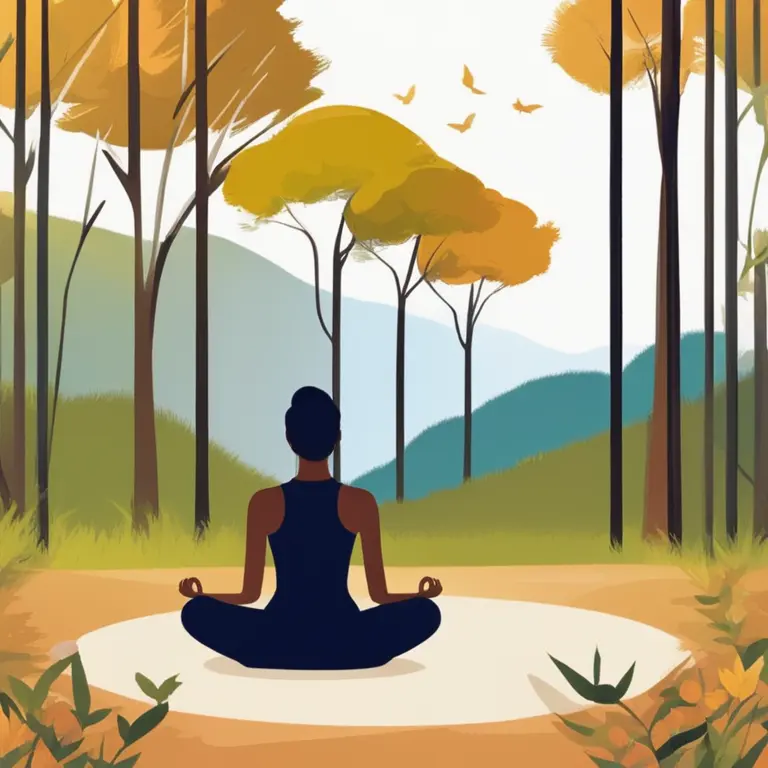
Beginner's Guide to Mindfulness Practices
Embark on the journey of inner tranquility with our easy-to-follow mindfulness meditation guide for beginners.
article by Hina Kurosawa
Starting Your Mindfulness Journey
Embarking on the practice of mindfulness meditation can be life-altering, as it brings you into a state of enhanced self-awareness and peace. For those new to meditation, starting with the basics is crucial. Mindfulness is the art of being present in the moment, observing your thoughts, feelings, and sensations without judgment. To begin, find a quiet space where you won't be disturbed. Wearing comfortable clothing, choose a sitting position on a cushion or chair that supports an upright posture conducive to alertness and relaxation. Set an intention for your practice, such as cultivating calmness or self-compassion, to guide your meditation session.

Understanding the Breath
Breath is often cited as the anchor of mindfulness practice, as it provides a focal point to return to when the mind wanders. Start by simply noticing the breath, feeling the air entering and exiting your nostrils, the rise and fall of your chest, or the expansion and contraction of your abdomen. There is no need to alter the breathing pattern – just observe it. When thoughts intrude, as they naturally will, gently acknowledge them and redirect your attention back to your breath. This will cultivate a sense of presence and anchor you in the current moment.

Engaging the Senses
Mindfulness meditation invites you to engage all your senses. One at a time, bring awareness to what you see, hear, smell, taste, and touch. Perhaps you notice the light filtering through your eyelids, the distant sound of birds, or the warmth of the sun on your skin. Observing these sensations without attaching stories or judgments to them can deepen your meditative state and help to stabilize your focus. It’s a practice of accepting the present moment exactly as it is, without resistance or attachment.

Dealing with Distractions
As a beginner, you may find that your mind is prone to distractions and wandering thoughts – this is completely normal. Rather than becoming frustrated, view each distraction as an opportunity to practice patience and kindness towards yourself. Note any recurring themes in your distractions as they can offer insights into your mind’s patterns. Each time you notice yourself becoming distracted, congratulate yourself for the awareness and return to your breath or sensory focus. This non-reactive approach is the essence of mindfulness.

Incorporating Mindfulness into Daily Life
Mindfulness is not limited to formal meditation practice; it can be integrated into daily activities. Whether you are eating, walking, or even doing household chores, you can practice mindfulness by fully engaging with the experience. Notice the textures, flavors, bodily movements, and emotions that arise. Over time, this continuous engagement with the present moment can lead to a greater sense of peace and contentment throughout your day.
Cultivating Consistency and Patience
Regular practice is key to developing a strong mindfulness routine. Aim to meditate daily, even if it’s just for a few minutes to start. Over time, you can gradually increase the duration. Remember to be patient with yourself; progress in meditation is not always linear. Mindfulness grows with time, and the benefits unfold subtly but profoundly. Celebrate the small victories, like staying focused for a little longer or observing a positive change in your reactions to stress.
Published: 1/18/2024
Modified: 1/18/2024
More predictions
Come back here soon to learn more about yourself and your future


Can Meditation Manage Depression?
Discover how meditation can contribute to managing depression, its potential benefits, and the connection between mindfulness and mental health.


Can Meditation Impact On Depression?
Meditation can be a powerful tool for mental health. Discover whether incorporating a meditation practice can alleviate depressive symptoms.


The Origins of Meditation: Tracing Its Historical Roots
Discover the historical origins of meditation, its transformation through time, and its profound impact on various cultures around the world in this insightful article.